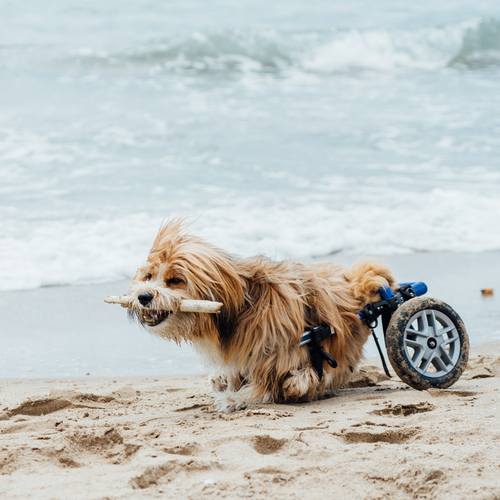Dogs bring a lot of joy, love, and tail-wagging energy into our lives. However, when they face challenges with their mobility, it can be difficult not only for them but for you, too. Explore the causes and solutions for canine mobility issues to understand better how to keep your pup moving happily and healthily.
Canine Arthritis
Arthritis isn’t just a human ailment; our canine companions can suffer from it, too. This degenerative joint disease leads to inflammation, pain, and stiffness, making those once-enthusiastic walks more of a hobble.
Solution: Regular exercise, weight management, and supplements, such as glucosamine, can be game-changers. For severe cases, consult your vet about anti-inflammatory medications or even physical therapy. Keep your dog comfortable with orthopedic beds and avoid cold, damp environments.
Hip Dysplasia
Hip dysplasia is a genetic condition where the hip joint doesn’t fit into the hip socket correctly. Common dog breeds that are susceptible to mobility issues such as hip dysplasia are usually larger breeds, including Labradors and German Shepherds.
Solution: Early detection is crucial. Maintain a healthy weight for your dog and provide joint supplements. In advanced cases, surgical intervention may be necessary. Low-impact exercises, such as swimming, can help strengthen muscles without putting too much strain on the joints.
Spinal Issues
Spinal problems, such as intervertebral disc disease (IVDD), can lead to severe pain and mobility issues. This condition often affects breeds with long backs, including Dachshunds and Corgis.
Solution: If you notice signs of back pain, reduced mobility, or paralysis, seek veterinary help immediately. Treatment ranges from medication and rest to surgery. Preventive measures include using ramps instead of stairs and avoiding activities that put undue strain on the spine.
Injuries From Accidents
Our adventurous dogs sometimes get themselves into sticky situations, leading to injuries that can impact their mobility. Broken bones, torn ligaments, and muscle strains are common culprits.
Solution: Immediate veterinary care is essential for any serious injury. Recovery might involve rest, medication, or surgery. To prevent accidents, always supervise playtime and keep hazardous areas off-limits.
Neurological Disorders
Degenerative myelopathy and other neurological disorders can severely affect a dog’s ability to move. These disorders are often progressive.
Solution: While there’s no cure for many neurological disorders, supportive care can improve quality of life. Physical therapy, mobility aids, and regular vet check-ups can make a big difference.
Understanding the causes and solutions for canine mobility issues ensures your furry friend can continue to enjoy an active and fulfilling life. From arthritis to neurological disorders, each condition has its own set of challenges and remedies.
Mobility problems can affect even the most energetic dogs. Keep a watchful eye on your pet’s health, and consult a veterinarian if you have any concerns. For more insights and personalized advice, check out our comprehensive guide to the health and care of your dog. No matter the issue, there’s always hope and help available to keep those tails wagging.

